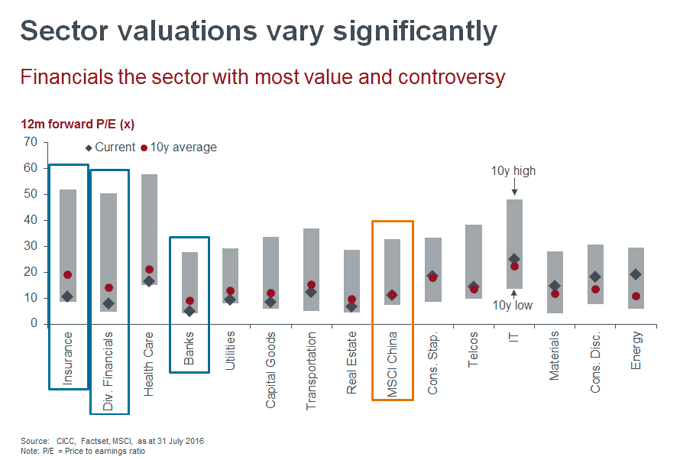‘Investors hiding behind a negative macroeconomic view are ignoring strong investment opportunities at a company level, whether listed in Shanghai, Shenzhen, Hong Kong or US-listed ADRs (American Depositary Receipts). We share investors’ macroeconomic concerns and incorporate them into how we think the investment opportunity set,’ says Awdry.
He also disagrees with investors who think China is just a trading market. That may be true in parts, but not for every stock. Investors should study the long-term share price charts of stocks like Tencent, Zhengzhou, Yutong Bus and New Oriental Education. A focus on strong businesses driven by consumer demand has helped returns on his Henderson Horizon China strategy in recent rocky markets. Stocks with high quality management, strong cash flows and industry leading margins have been in demand as markets digested yet more reforms.
‘From late 2012 to 2015, most reform measures under President Xi were pro-market. We asked investors to welcome these changes,’ says Awdry. The government had pushed interest rate liberalisation and was slowly opening up markets in bonds and equties, via the Hong Kong-Shanghai Stock Connect launch in 2014, and internationalising the currency. The ensuing devaluation prompted the government to step in, effectively rolling back reform by propping up the onshore and offshore currency market, bonds and equities.
Further restrictions on capital flight and limits on overseas credit withdrawals also signal that barriers are being built up again, not dismantled. ‘Since the yuan devaluation, things have gone slightly off track. There has been much more government intervention in the economy. The government continues to hold a lot of influence,’ says Awdry.
Now, micromanagement is back on the agenda. State-owned enterprises (SOEs) look set to dominate important sectors as much as or more than in the past. For equity investors, state-owned looks cheap but Awdry warns SOEs could be value traps for a long time. In such an environment, it is not surprising that Awdry and deputy manager May Ling Wee are looking for privately controlled businesses.
Henderson Horizon China Fund has been selling off SOEs, especially those that are poor capital allocators, in favour of the private sector. The strategy therefore has a large underweight to financials and, for now, zero exposure to banks. Although insurance remains a juicy proposition given the country’s low penetration rate, the team would rather own privately held AIA Group, than state-controlled China Life.
The business outlook is tougher now than it was when the economy was racing ahead. Strong growth was good for equities, but created problems for the economy too. Now the government and markets are trying to juggle growth, reform and deleveraging all at the same time.
‘It is like driving a car with three accelerator peddles; you cannot press them all at the same time,’ says Awdry. His preference is for companies that can thrive in a low-growth, high debt environment. Consumer spending remains a bright spot, with annual growth in disposable income near 10%. ‘We are being pragmatic. We are bottom-up stock pickers but there is lots of macro thinking involved. We are nowhere near our historical high in the number of long positions. A lot of stocks are not getting through our filters,’ says Awdry.
Even so, he does point to ongoing opportunities among China’s largest privately held stocks. His weightings to Chinese ADRs listed in the US has doubled since December 2015, with a list that includes well-known names such as Alibaba in e-commerce, search engine Baidu and hotelier China Lodging Group.
The strategy can also take short exposures. Instead of just having no position in a share they do not like, the team can introduce a short position to profit from share price falls. The Henderson Horizon China Fund typically runs with a net exposure of around 100% but can increase short exposure if circumstances dictate. Maximum exposures are set at 150% long and 50% short.
When a company looks overpriced, the team can benefit from shorting on the view that the stock price will fall, rather than just assuming a zero weighting as a long-only manager would. High valuations, overly positive sentiment and potentially exaggerated profitability expectations are always warning signs that a company may disappoint. Likewise, a deteriorating outlook or shrinking competitive advantage may not have been priced in.
Awdry and Wee will also undertake pair trades within an industry, based on fundamental competitive positioning or balance sheet strength. That flexibility has helped the strategy outperform the MSCI China by a significant margin since January 2008. While the index is down 4.7% over that period, Henderson Horizon China Fund is up nearly 40%, as at the end of July 2016. A focus on well-run companies and the added ability to take short positions can also dampen downside risk and provide a defensive element to investor capital. Charlie Awdry’s own personal track record stretches back further to a full ten years.



